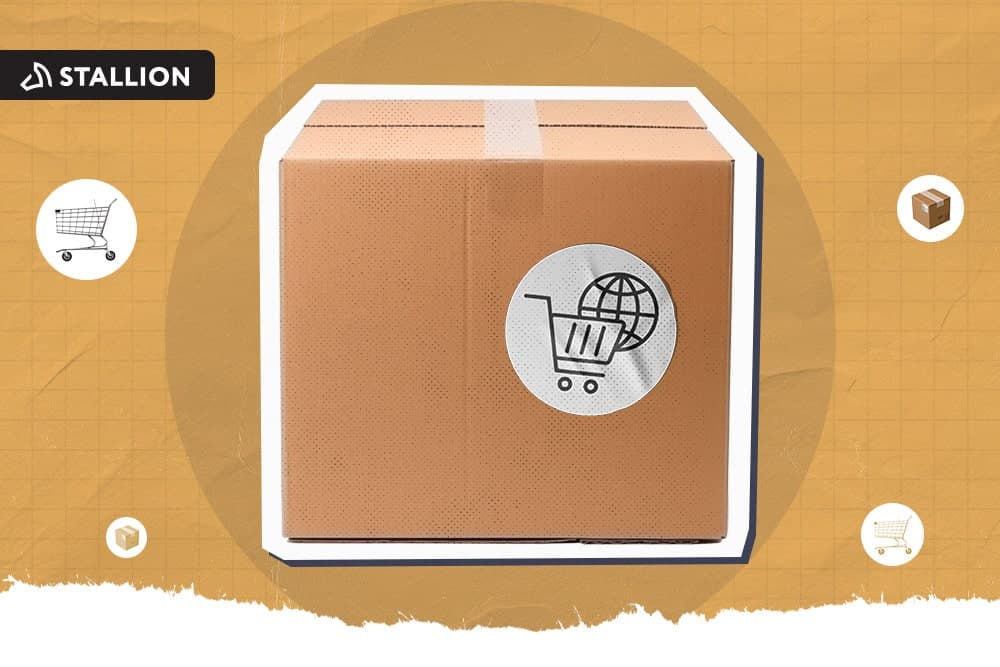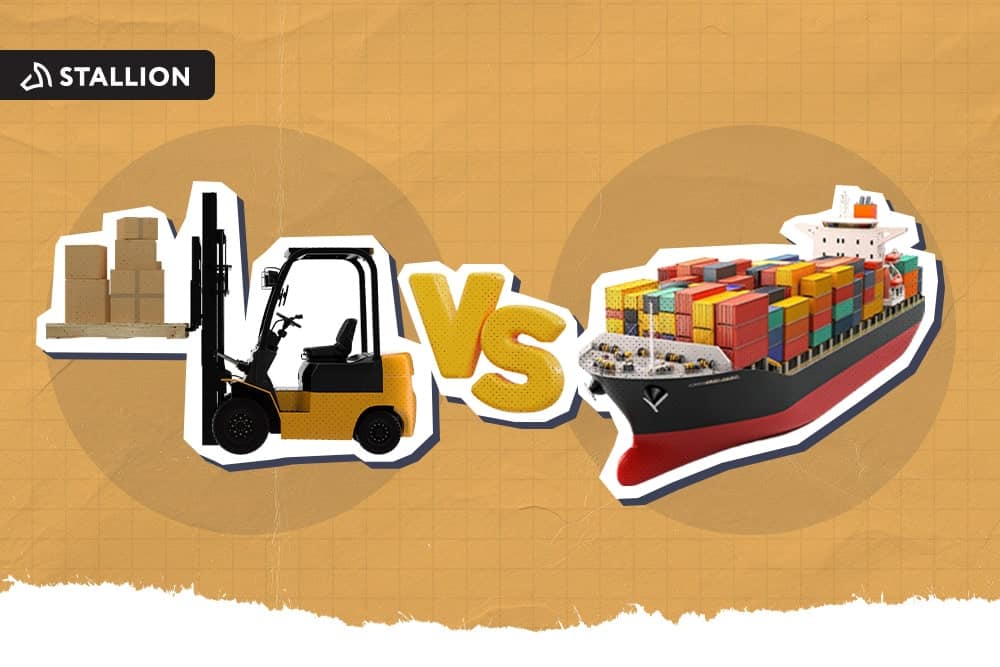
As the second-largest country in the world by land area, Canada has a unique set of challenges and opportunities in retail shipping. Understanding the complexities of retail shipping statistics in Canada is not just about learning data analysis; it is a key to unlocking insights that can drive operational efficiency, enhance customer satisfaction, and deal with the dynamic trends shaping the Canadian retail market.

According to statistics, Canada already has 144,301 various Canadian retailers. As of June 2023, for example, the province of Ontario holds the top spot in retail trade, with approximately 52,816 establishments. This reflects the province's economic vibrancy and diverse consumer market.
With over 32,325 total retail trade and establishments, Québec—the second most populated province— has the second most store retailers, showcasing its significance in the national retail sector. Meanwhile, British Columbia is the third province with a total retail trade of 20,922.
In contrast, Nunavut, a large but sparsely populated region, had a very different retail landscape, with only 85 stores. The noticeable difference in total retail and numbers across these regions reflects the intricate interplay between population density, economic activity, and geographical factors, shaping the retail dynamics unique to each province and territory in the expansive Canadian landscape.
Additionally, the disparities show how crucial it is to consider local characteristics when evaluating the retail commerce landscape because it is closely linked to the unique features of each location and not just a reflection of consumer demand.
Source: Retail Trade Establishments by Region in Canada
Getting across the enormous Canadian retail industry requires knowing the complex web of logistics that makes it possible for products to move from warehouses to consumer's doorsteps. From the bustling urban centres to the country's remote corners, let's shed light on the strategies, technologies, and market forces that orchestrate the seamless delivery of products in the Canadian retail ecosystem.

Shipping significantly impacts how retail e-commerce sales are shaped in Canada. Fast and cost-effective shipping companies enhance the appeal of online shopping, influencing purchasing decisions for your consumers. Timely deliveries contribute to customer satisfaction, building trust and loyalty.
On the other hand, prolonged shipping times or high costs can deter potential buyers. The vast geographic area adds complexity, making efficient shipping crucial. It ensures products reach customers promptly and contributes to the success and convenience of e-commerce transactions.
In 2022, the typical Canadian online shopper exhibited a noteworthy shift in behaviour, increasing the percentage of their average e-commerce orders per month to 26.4 - a substantial 60% surge compared to the figures observed each month since 2019. This increase reflects an evolving consumer landscape, where individuals now hold Canadian retailers to elevated expectations in this "new normal" era.
Retailers' transformed preferences and expectations need a corresponding adaptation from retailers to maintain engagement. In response to these changes, businesses must evolve and align with the changing consumer behaviour dynamics for sustained relevance and success in the digital marketplace.
Source: Canada Post E-Commerce Infographic

As of 2022, they estimate the size of the e-commerce sales in the Canadian retail market reached CAD 473 billion, with projections indicating a robust Compound Annual Growth Rate (CAGR) exceeding 4% throughout the forecast period from 2022-2027. Meanwhile, according to points, in 2022, e-commerce retail sales in Canada are expected to reach a value of approximately 110 billion Canadian dollars.
Forecasts indicate that the e-commerce market in Canada will witness substantial growth, predicting a surge to over 157 billion Canadian dollars by the year 2026. These estimates present the dynamic evolution of the digital retail e-commerce and landscape in Canada, highlighting the increasing significance of online commerce as a driving force in the country's retail sector over the specified period.
Within the Canadian retail market, several pivotal sectors, including food & grocery, clothing & footwear accessories, home, electrical, and health & beauty, play integral roles in addressing diverse consumer needs. In 2022, the food & grocery sector claimed the highest value share of sales, reflecting its paramount importance in the market.
Meanwhile, two prominent players, UPS and Canada Post, emerged as Canada's primary parcel shipping providers in 2022, collectively accounting for a substantial market share. These two each handled 18% of parcels during that period. Following closely, Purolator secured the second position with a share of 13% in the parcel shipping market.
Source: Canada Market Retail Analysis, Top Courier Service Providers in Canada
The Canadian retail shipping industry has recently undergone dynamic transformations driven by evolving consumer behaviours, technological advancements, and global economic shifts. As e-commerce continues to surge, there is a heightened emphasis on efficient and sustainable shipping solutions. Exploring these changes offers valuable insights into how the Canadian retail shipping sector adapts to meet the demands of a rapidly evolving market.
Technological Advancements
Economic and Regulatory Charges
Environmental Considerations
These are some important changes affecting the shipping industry in Canada. As the industry adjusts to new technologies, economic changes, and environmental concerns, you can anticipate additional improvements in services and changes in the coming years.
The rise of e-commerce has significantly impacted the landscape of Canadian logistics. Here are some of the most common trends and challenges:

Trends:
These are a few trends and challenges observed in Canadian e-commerce logistics. As the industry expands, businesses must adjust to these changes and develop smart solutions to tackle these challenges.
Source: Trends in E-Commerce Logistics

Challenges:
Sources: Challenges in the Canadian Supply Chain, Labour Shortages in Canada
Let's explore the key factors influencing retail shipping in Canada and how they impact your business.
Regulatory factors and policies in Canada have a direct impact on retail shipping. They shape shipping practices, safety standards, and trade regulations, influencing the efficiency and cost of shipping for businesses. Adapting to these policies is crucial for navigating the regulatory landscape and ensuring smooth retail shipping operations in the country.
Economic factors, like fuel prices and inflation, significantly impact shipping costs and efficiency in Canada. Fluctuations in these factors directly influence operational expenses, affecting the affordability and speed of retail shipping. Sellers must monitor economic data and trends to make informed decisions and optimize shipping strategies.
Environmental considerations in the shipping industry impact retail shipping in Canada. Growing awareness and regulations around sustainability drive the adoption of eco-friendly practices, influencing shipping methods and costs. Sellers adapting to green initiatives contribute to environmental protection and align with changing consumer preferences for sustainable and responsible business practices.
Understanding these numbers, from shipping to total retail sales to volumes to sales to popular modes, is your ticket to navigating the Canadian electronics retail landscape.

In 2022, Canada Post handled approximately 286 million parcels, marking a decline of about twenty percent from the previous year. Notably, Canada Post's parcel volume peaked in 2020 when it reached 389 million units, showcasing the symbol of the government dynamic trends in parcel deliveries in recent years.
Source: Canada Post Parcel Volume
Checking out statistics on the popular ways to ship and the number of companies doing it helps Canadian sellers figure out what works best. Companies like FedEx, UPS, DHL Express, and Purolator offer fast but pricier options. Canada Post, a government service, gives reliable and budget-friendly choices.
Looking into these methods helps sellers find the right mix of speed and cost, meeting customer needs while keeping things efficient. It's about picking the best way to ship stuff in Canada and making sure it works well for both the seller and the customer.
Have you ever wondered what goes on in your customers' minds regarding shipping? Understanding consumer perspectives on the benefits of retail shipping is key to tailoring your strategies.
53% of shoppers always research before buying to make sure they're making the best choice. Here are some of the criteria they check before deciding:
Customers are checking online reviews more than ever, and many prefer to read several reviews before deciding on a product or service. Most surveyed consumers (57%) usually read 2 to 5 reviews, while more than a quarter (28%) prefer reading between 6 and 10 online reviews before deciding.
Canadian consumers face concerns about rising prices, a potential recession, and uncertainty. About 47% express significant worry about personal finances, leading 70% to reduce non-essential spending. Despite this, recent Statistics Canada data shows a year-over-year increase in retail sales, indicating resilient consumer spending.
While consumers prioritize cost-consciousness and seek enhanced digital and in-person retail experiences, businesses can seize opportunities by reducing costs and providing seamless user experiences. Combining human expertise and technology-driven innovation allows retailers to meet evolving expectations and stand out in the market, addressing consumer desires for efficiency and meaningful interactions.
Stallion offers a comprehensive solution for Canadian sellers to adapt and optimize their shipping strategies. With a deep understanding of consumer preferences, Stallion provides valuable insights into popular shipping methods and carriers.
Whether leveraging private couriers like FedEx and UPS for speed or opting for the reliable and cost-effective options of Canada Post, Stallion equips sellers to make informed decisions. Staying attuned to consumer perspectives on retail sales and shipping, Stallion ensures that your shipping approach aligns with market trends, providing a competitive edge in the ever-evolving Canadian retail sales landscape.
Adapt and optimize with Stallion for a seamless and efficient shipping experience!

Candy Rada is a dedicated professional with tons of experience in content writing for the shipping industry. As a literature degree holder, she excels in creating engaging content with strategies that enhance brand visibility. She enjoys playing with her cats, reading dystopian books, and joining trivia games in her free time.



Can our fellow Torontonians relate?
-
#smallbusiness #business #entrepreneur #socialmedia #shipping #ecommerce #canadianecommerce #shopify #poshmark #b2b #saas #etsy #ebay #canada #canadiansmallbusiness #shoplocalcanada #entrepreneur
#toronto

Here’s your quick hassle free shipping from 🇨🇦 to 🇺🇸 as a business owner!
-
Any questions?! Leave them 👇🏻 and save this video so you don’t forget!
-
#smallbusiness #business #entrepreneur #socialmedia #shipping #ecommerce #canadianecommerce #shopify #poshmark #b2b #saas #etsy #ebay #canada #canadiansmallbusiness #shoplocalcanada #entrepreneur

Meet @drinkbenny a 🇨🇦 female founded energy drink brand! Instead of focusing on their products, they’re taking a unique approach by hosting in person events in different Canadian cities to offer an experience for their community 🧡
-
What are your thoughts on in person events? 💭
-
#smallbusiness #business #entrepreneur #socialmedia #shipping #ecommerce #canadianecommerce #shopify #poshmark #b2b #saas #etsy #ebay #canada #canadiansmallbusiness #shoplocalcanada #entrepreneur

Do you know the difference between DDU and DDP when shipping internationally 🌏 ?
-
Questions? Leave them below! 👇🏻
-
#smallbusiness #business #entrepreneur #socialmedia #shipping #ecommerce #canadianecommerce #shopify #poshmark #b2b #saas #etsy #ebay #canada #canadiansmallbusiness #shoplocalcanada #entrepreneur

Here’s a quick hack to save time from choosing multiple postage options
↪️ Turn on the lowest postage rate automation to save you time!
-
Questions? Leave them below! 👇🏻
-
#smallbusiness #business #entrepreneur #socialmedia #shipping #ecommerce #canadianecommerce #shopify #poshmark #b2b #saas #etsy #ebay #canada #canadiansmallbusiness #shoplocalcanada #entrepreneur
